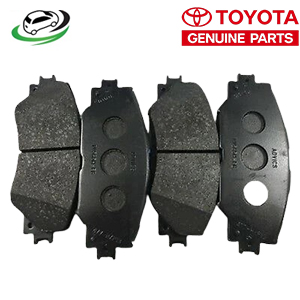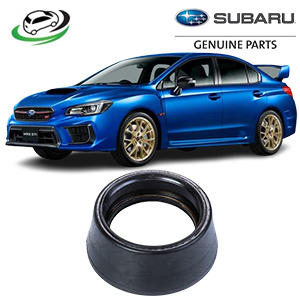Get Subaru Forester 2.5 4ATX Transmission Oil Filter 31728AA130
Transmission oil filters are integral components of an automatic transmission system, serving a vital role in ensuring smooth and efficient vehicle performance. In this detailed guide, we will explore the functions of a transmission oil filter, its benefits, maintenance requirements, and how to spot signs of wear or failure. Understanding the importance of this component can help extend the lifespan of your vehicle’s transmission and keep it running at peak performance.
1. What is a Transmission Oil Filter?
A transmission oil filter is a part of the transmission system that filters contaminants and particles from the transmission fluid. It’s typically found in automatic transmission vehicles, although some continuously variable transmissions (CVTs) and dual-clutch transmissions (DCTs) may also have filters.
The transmission oil filter ensures that clean transmission fluid circulates throughout the transmission system. This is essential because contaminants like metal shavings, dirt, and clutch material particles can accumulate over time. These contaminants can lead to wear on the transmission components, causing inefficient gear shifts and eventual damage to internal parts.
2. Functions of a Transmission Oil Filter
The primary function of a transmission oil filter is to filter out contaminants from the transmission fluid, ensuring that only clean fluid is used to lubricate and cool the transmission’s internal components. Here’s a closer look at its functions:
a. Filtering Contaminants
As transmission fluid circulates through the transmission system, it picks up various contaminants such as metal shavings from gears, clutch material, and other debris. The oil filter catches these contaminants before they can circulate through the system, preventing premature wear of transmission components.
b. Regulating Fluid Flow
A well-maintained transmission oil filter ensures a smooth flow of fluid within the system. It allows transmission fluid to move freely, reducing friction and heat buildup, which are critical for the longevity of the transmission.
c. Prolonging Transmission Life
By keeping contaminants out of the transmission fluid, the filter prevents excessive wear and damage to sensitive transmission components. This extends the life of the transmission and helps avoid costly repairs.
d. Maintaining Smooth Shifting
Contaminated transmission fluid can cause sluggish or harsh shifting, making your driving experience less smooth. A clean transmission oil filter ensures that fluid can perform optimally, allowing for smooth and responsive shifts.
3. Benefits of a Transmission Oil Filter
A clean, properly functioning transmission oil filter offers numerous benefits, which contribute to the overall health of your vehicle’s transmission system. Some of the key benefits include:
a. Improved Performance
The transmission system relies heavily on clean, efficient fluid to function properly. By filtering out debris and contaminants, the transmission oil filter ensures optimal fluid performance, allowing for smooth gear changes and better acceleration.
b. Enhanced Durability of Transmission Components
Transmission components such as gears, clutch packs, and valves are sensitive to debris. Metal particles and other contaminants in the fluid can wear down these components over time. A transmission oil filter helps protect these parts by ensuring only clean fluid circulates through the system.
c. Prevents Overheating
A dirty or clogged filter can impede the flow of transmission fluid, which leads to increased friction and heat within the transmission. This can result in overheating, a common cause of transmission failure. A clean filter allows for proper fluid flow, keeping the transmission cooler and reducing the risk of overheating.
d. Cost Savings on Repairs
Maintaining a clean transmission oil filter can prevent severe damage to your transmission, reducing the likelihood of costly repairs or replacements. Since transmission repairs are among the most expensive vehicle maintenance jobs, this simple preventive measure can save you a significant amount of money.
e. Increased Fuel Efficiency
When the transmission fluid is clean, it reduces resistance within the transmission, leading to more efficient operation. As a result, the engine doesn’t have to work as hard, which can improve fuel efficiency.
4. Maintenance of Transmission Oil Filter
Regular maintenance of the transmission oil filter is crucial for the proper functioning of your vehicle’s transmission system. Here’s what you need to know about maintaining your filter:
a. Change the Transmission Oil Filter Regularly
Transmission oil filters should be replaced at intervals recommended by the vehicle manufacturer, usually every 30,000 to 60,000 miles. However, the frequency of replacement may vary depending on your driving habits and the specific transmission type.
b. Transmission Fluid Flush
It’s essential to perform a transmission fluid flush when replacing the transmission oil filter. Flushing the old fluid out of the system ensures that the new filter operates with fresh fluid, preventing any leftover contaminants from circulating.
c. Inspect the Filter During Transmission Servicing
During routine maintenance, such as when changing the transmission fluid, it’s a good idea to have the filter inspected for signs of wear, clogging, or damage. Early detection of issues can prevent more significant problems later on.
d. Use High-Quality Filters and Fluid
Opt for high-quality transmission oil filters and fluids. Cheap, low-quality parts may not provide adequate protection and can lead to premature transmission wear. Using the correct type of transmission fluid, as recommended by the manufacturer, is equally important for the health of the transmission.
5. Signs of a Failing Transmission Oil Filter
Recognizing the symptoms of a failing or clogged transmission oil filter can help you take corrective action before severe damage occurs. Some signs include:
a. Slipping Gears
If your transmission is slipping in and out of gear or struggling to stay engaged, it could be a sign that the transmission fluid is not circulating properly due to a clogged filter.
b. Delayed Gear Shifts
A dirty or clogged filter can cause delays in shifting, making it take longer for the vehicle to move from one gear to another. This can result in poor acceleration and decreased performance.
c. Unusual Noises
Whining, grinding, or clunking noises when shifting gears may indicate that the transmission fluid is contaminated and not able to lubricate the internal components effectively. This could be due to a clogged or damaged filter.
d. Overheating Transmission
If the transmission oil filter is clogged, it can restrict fluid flow, leading to increased friction and overheating. Overheating can cause significant damage to the transmission and should be addressed immediately.
e. Transmission Fluid Leaks
If your transmission fluid level is low and you notice leaks under your vehicle, this could indicate that the transmission filter is clogged and causing excess pressure, leading to leaks in seals and gaskets.
6. Replacing the Transmission Oil Filter
Replacing the transmission oil filter is a straightforward process but may require the help of a professional mechanic, especially if you are unfamiliar with automotive maintenance. Here are the general steps involved:
- Drain the Transmission Fluid
Before accessing the filter, you need to drain the transmission fluid. This involves removing the transmission pan and allowing the old fluid to drain out completely. - Remove the Old Filter
Once the fluid is drained, the filter can be accessed by removing a few bolts. The old filter is then taken out and discarded. - Install the New Filter
After the old filter is removed, the new filter is installed in its place, ensuring a tight fit. - Replace the Transmission Pan and Fluid
The transmission pan is reinstalled, and fresh transmission fluid is added to the system. - Test the Vehicle
After installation, it’s important to test the vehicle to ensure that the transmission is functioning correctly and that there are no leaks.
Conclusion
The transmission oil filter plays a critical role in maintaining the efficiency and longevity of your vehicle’s transmission system. Regular maintenance, including timely filter replacement and fluid flushes, ensures smooth operation, prevents overheating, and extends the lifespan of the transmission. Recognizing the signs of a failing transmission oil filter and taking prompt action can prevent costly repairs and keep your vehicle performing at its best.
Follow us on Facebook for more parts.




Reviews
Clear filtersThere are no reviews yet.